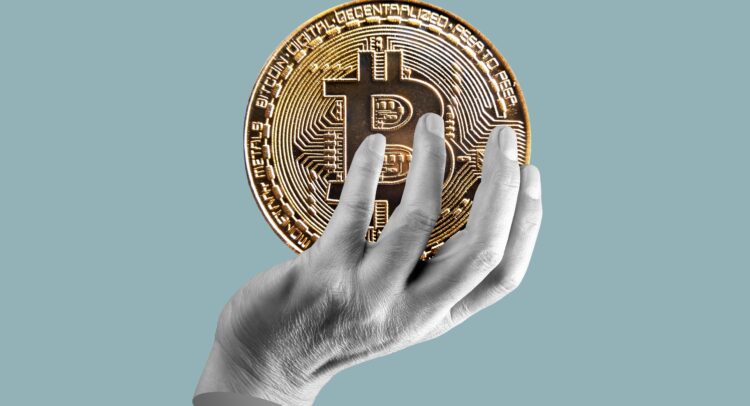Bitcoin, the digital golden child of the financial world, is struggling. For crypto traders, the news is hard to ignore. The U.S. Federal Reserve is preparing to cut interest rates, possibly by a massive 50 basis points, yet Bitcoin seems unfazed—or rather, disinterested. What was once a digital asset that thrived on economic uncertainty and inflationary fears is now facing a new challenge: skepticism. The question that’s burning in the minds of many traders is, Why isn’t Bitcoin soaring with the Fed’s rate cut news? After all, historically, lower interest rates have been a dream scenario for Bitcoin prices.
This article takes us on a journey through the complexities surrounding Bitcoin’s current market performance, how traders are reacting to the Fed’s upcoming rate decisions, and why the digital currency seems to be lagging behind expectations, despite a favorable economic backdrop.
Let’s take a deeper dive, one that reflects both the emotion and practicality that crypto traders experience on a daily basis.
The Fed’s Rate Cut: A Glimmer of Hope or a Red Flag?
The U.S. economy has seen better days, and tomorrow’s Nonfarm Payrolls report could either provide a lifeline or sink the ship further. Economists predict a modest increase in jobs added—around 160,000—up from July’s relatively disappointing 114,000. If these numbers come in strong, the Federal Reserve might go easy, trimming its benchmark interest rate by just 25 basis points. But if the numbers are weak, the Fed could take a bolder step and slash rates by 50 basis points.
For traders, a rate cut is usually a cause for celebration. Why? Lower interest rates make borrowing cheaper, which typically encourages spending and investment. Historically, during periods of monetary easing, Bitcoin and other cryptocurrencies have seen significant price jumps as investors look for assets that offer a hedge against inflation and devaluation of fiat currencies.
But this time around, things feel different. Bitcoin, which once thrived in the face of monetary easing, is now acting like a stubborn mule, refusing to rally despite favorable macroeconomic winds. At the current price of $56,300, Bitcoin is down 5% over the last month and is more than 23% off its all-time high of $73,500, reached just six months ago.
The excitement that usually surrounds crypto in times of rate cuts seems to have vanished.
Why Traders Are Hesitant: A Case of “Once Burned, Twice Shy”
Quinn Thompson, the CIO of hedge fund Lekker Capital, recently summed up the mood in the market, saying, “Every single piece of economic data this week has been weak… But you’ve been burned too badly for the past 6 months to press the buy button.” This quote resonates deeply with traders who have been hit hard by Bitcoin’s unpredictable behavior in recent months.
There’s a sense of fatigue. For the last six months, every positive economic signal has been followed by a Bitcoin downturn, not an upswing. Traders who used to buy the dip are now watching from the sidelines, nervous about getting burned again. For many, the fear of loss is stronger than the hope for gains.
This hesitation is more than just emotional—it’s grounded in reality. Despite the Fed’s plans for aggressive rate cuts, Bitcoin has shown little interest in resuming its upward climb. Each piece of news about potential cuts has barely moved the needle. Traders are now wondering if Bitcoin’s ability to benefit from rate cuts is a thing of the past.
What Changed? The New Bitcoin Reality
Back in 2020, when the Fed slashed interest rates to nearly zero during the COVID-19 pandemic, Bitcoin soared. It went from a niche asset to a trillion-dollar market darling in less than a year. That era of rapid monetary expansion fueled a frenzy in the crypto markets. Traders were flush with cash, and Bitcoin seemed like the ultimate hedge against the instability of traditional currencies.
But fast-forward to 2024, and the dynamics have shifted. The current economic landscape is more complicated, and so is Bitcoin’s role in it. While the Fed’s rate cuts could, in theory, be a tailwind for Bitcoin, it seems like the market is no longer reacting with the same enthusiasm. Traders are grappling with a new reality: maybe Bitcoin isn’t the perfect hedge it once appeared to be.
There’s another factor at play: risk aversion. After several months of a downward trend, traders are cautious. Bitcoin’s volatility, once seen as a feature, is now viewed as a liability by many. In a world where every data point seems to contradict the last, traders are opting for safer, less volatile assets, even as the Fed prepares to lower interest rates.
Where Do We Go From Here?
For crypto traders, the road ahead is murky. The Fed’s aggressive rate cuts may bring some relief to traditional markets, but the crypto world seems to be sitting this one out. Bitcoin, long hailed as a hedge against inflation and economic uncertainty, is acting more like a bystander than a protagonist.
The key for traders is patience. As tempting as it may be to jump in and buy the dip, caution is warranted. The Fed’s rate cuts might not be the magic bullet they once were for crypto prices. But that doesn’t mean Bitcoin’s story is over. Far from it.
Crypto traders know that markets are cyclical. Just as Bitcoin once rose to dizzying heights, it may find its footing again. For now, though, the name of the game is caution, not excitement. And for those watching the markets closely, the next few weeks could offer valuable lessons in both risk management and timing.



